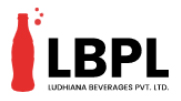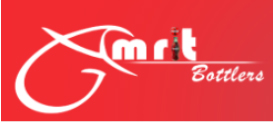Product traceability
Product traceability allows you to track your inventory movements from end to end, meaning you can track products to where they were shipped, or back through their operational steps.
The term itself is coined together from “Trace” and “Ability” and is used to describe the ability to track products by all manufacturing industries.
Having a traceability program for manufacturing in place will allow you to find historical information on a product, such as:
- Suppliers
- Items
- Inspection notes
- Manufacturing details
- Time spent at each workstation
- Distributors
Benefits of traceability in manufacturing
When you start using a traceability program, you can start taking advantage of:
1. Root cause analysis
Having your product information from end-to-end means you can perform an in-depth analysis of your manufacturing routes to see the root cause of any problem.
This will enable you to see in which areas of your production are underperforming and help you make changes to improve your manufacturing lead time.
For example, if some finished products have defects, you’ll have an overview of your entire production line so you can pinpoint where the defects are occurring, such as:
- The products missed a particular process, like a quality check
- A new team member is making mistakes and needs to be trained
- A faulty tool or machine needs repairing
2. Continuous improvement
Following on from the root cause analysis benefit of using product traceability, you can also implement continuous improvement into your production flow.
A continuous improvement system is essentially a form of lean manufacturing.
However, the biggest difference is that with continuous, you and your team members will take responsibility for identifying inefficiencies on the shop floor, developing plans, and implementing improvements for future production runs.
Product traceability systems will be a crucial tool for helping you gather real-time and accurate data on your manufacturing, so you can perform regular audits on your operations to make sure your production is always running smoothly.
Continuous improvement in manufacturing is perfect for those looking to:
- Remove waste
- Adopt green manufacturing into their business
3. Value Stream Mapping
Value stream mapping also referred to as material and information flow mapping is a lean management method for helping you understand your manufacturing process and how to redesign it to get the most value from manufacturing.
The value stream map is a traceability program that helps you monitor your:
- Operation steps
- The quantities of raw material needed
- The time the product spends at each workstation
Since product traceability in manufacturing monitors how your products move through your shop floor, it lends itself well to designing your value stream mapping.
Doing this will help you get a granular picture of your operations and more of an idea of what could be improved on your production lines.
- Quality and engagement
Including product traceability in your manufacturing means that you and your team members can take accountability and be more engaged along the shop floor by having the processes in place to continuously monitor progress.
Product traceability systems help you to identify if you need more quality check-ups along your manufacturing process to avoid the chance of a defective product being shipped.
- It’s your obligation
Finally, a lot of manufacturing industries are highly regulated, and having a traceability program is a legal requirement (especially in places such as food production).
That’s why if you work in one of these highly regulated areas, finding batch inventory management systems that can track your end-to-end product development and handle batch numbers is important to avoid any of the issues mentioned earlier in the article.
However, even if you’re not a manufacturer with products under intense scrutiny, using product traceability systems allows you to:
- Improve inventory management
- Maximize your return on investments
- Make better business decisions with improved analytics
These were the benefits of using product traceability within your manufacturing. But how do you go about improving product traceability?
How to improve traceability?
If you want to start improving product traceability in manufacturing, you can do so by:
- Tracking and record-keeping
If you ever need to do a product recall, your priority is going to be identifying all the affected products, so you can better inform the public when you put out the notice.
Without proper records in place means that locating the products is going to be difficult and will ultimately increase the cost of the product recall, not to mention the damage it’ll do to your brand.
Product traceability systems allow you to keep records of:
- Batch numbers and production dates
- Product order numbers
- Expiration dates
- Production timestamps
- Supply chain visibility
Product traceability in manufacturing not only needs insights into your own production but improving product traceability also needs a better understanding of your supply chain.
Without these insights, you could put yourself in a position to have to initiate more recalls than you’d have to.
This can be due to a 3rd party business incorrectly handling your finished goods after they left your warehouse or a supplier sending you faulty materials or components.
You need to be able to trace your batches both forward to retailers as well as backward to your suppliers, by having a system in place that can quickly identify product history by their batch numbers.
- Proactive monitoring
The longer you leave defective products in circulation, the more difficult it becomes to trace them as they make their way through your supply chain.
One of the goals of improving your product traceability is the ability to spot problems soon, so you can nip any potential issues in the bud and avoid it turning into an even bigger problem.
Being proactive becomes far easier if you’re using product traceability systems that provide you with real-time information of production progress, so you can immediately see problems as soon as they appear.








